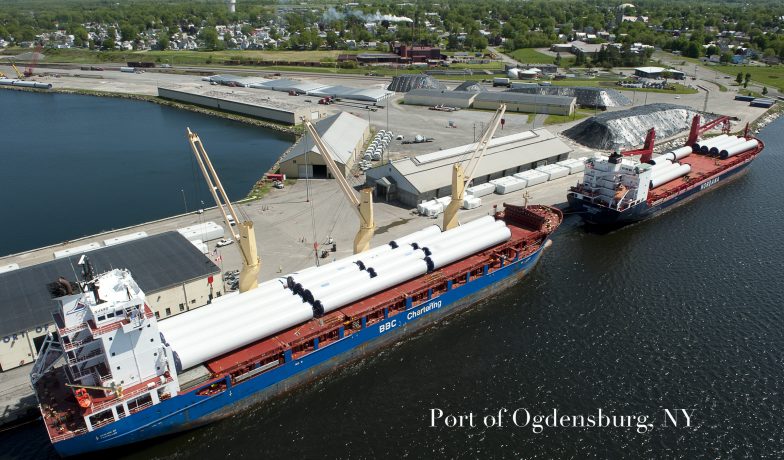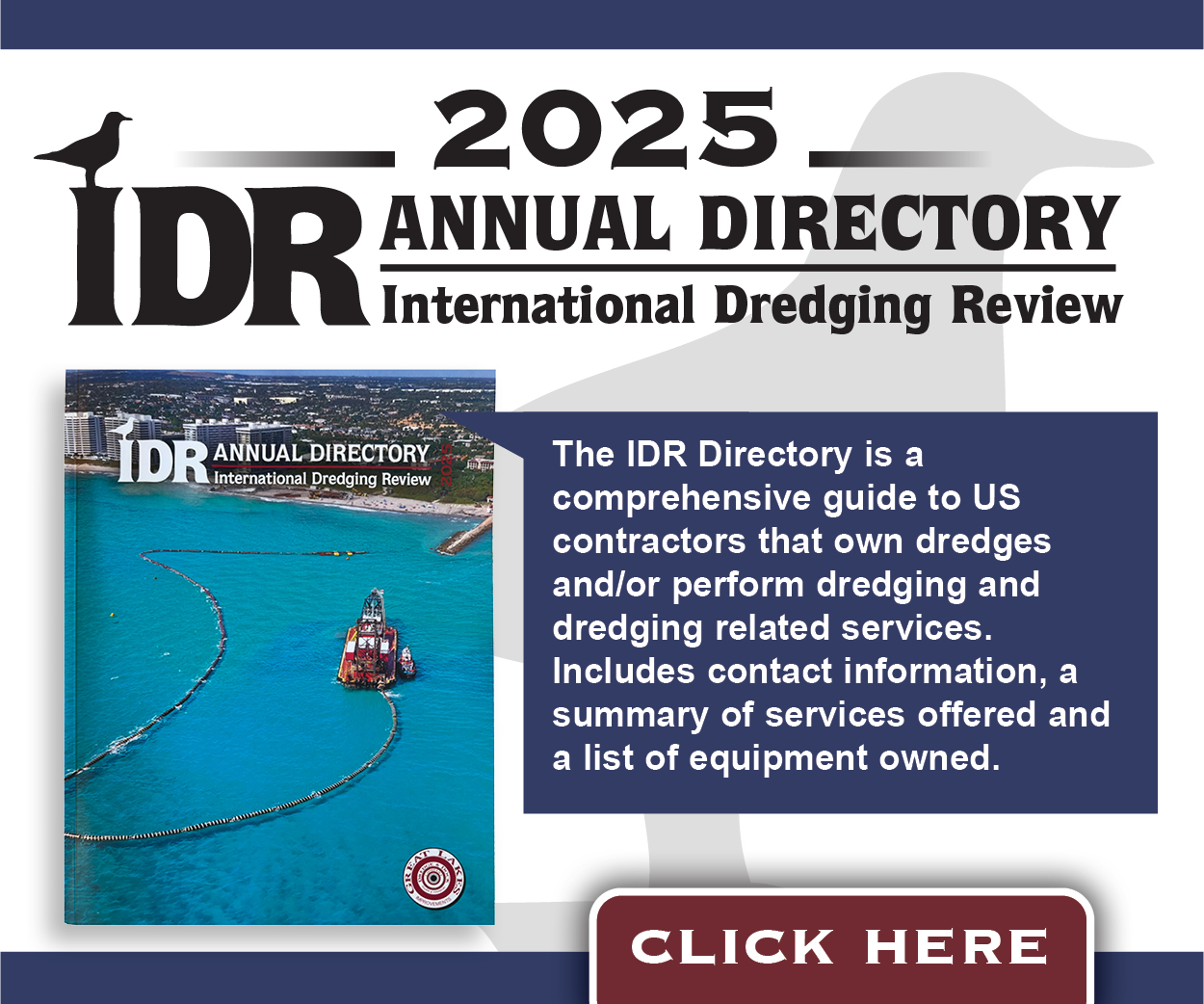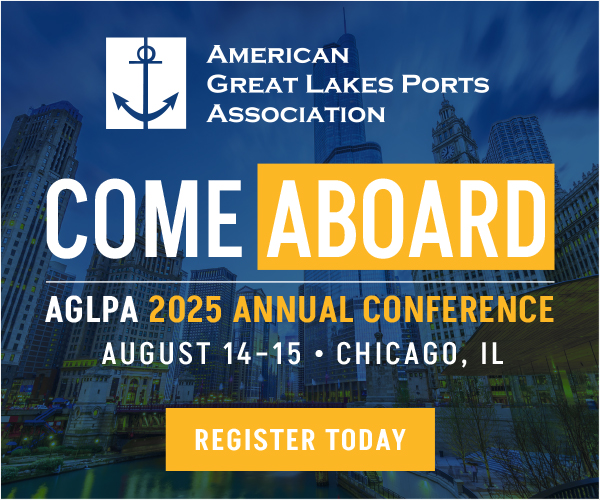Port Of Ogdensburg Harbor Deepening Plans In Limbo
The port of Ogdensburg, New York, sitting on the south bank of the St. Lawrence Seaway, faced a shock in April when the Corps of Engineers announced it was suspending $10 million it had committed to the dredging of Ogdensburg harbor. The suspension came after only a single bid for the dredging came in at two and a half times the Corps estimate, and more than the port authority could provide in its percentage of matching funds required by non-federal co-sponsors.
Ogdensburg, named after a Revolutionary War colonel, sits across the seaway from the Canadian towns of Prescott and Johnstown. The port is operated by the Ogdensburg Bridge and Port Authority, a state agency, which is also responsible for the Ogdensburg-Prescott International Bridge to Canada. Ogdensburg and port leaders have long hoped to dredge the harbor to a depth of 27 feet, to match that of the St. Lawrence Seaway. A study on dredging the harbor to that depth was done as long ago as 1983.
Steve Lawrence, executive director of the OBPA, said the deepening project was originally separate from another port project to extend the port’s dock frontage by 550 feet. But the two projects were coordinated according to what the Corps told the port. “The two projects were coupled because Corps thought they would go better together,” he said.
Any projects on which the Corps partnered would normally be subject to a 65/35 percent federal-state split, with either the OBPA itself or the state having to come up with 35 percent.
The deepening part of the project is now in suspension while the port waits to see whether and how the Corps will move ahead. “We are committed to working with [the Ogdensburg Bridge and Port Authority]” on the deepening,” said Avery Schneider, a spokesman for the Buffalo Engineer District, which includes Ogdensburg.
Schneider said the bid came in so high partly because there are so few interested contractors, and partly because of the difficulty of the job, which requires underwater blasting of bedrock. The Corps was limited to a $10 million commitment by section 107 of the River and Harbor Act of 1960, which governs small navigation project studies.
The port potential is there if the dredging ever gets done. Lawrence said the port docks between 12 and 18 vessels a year, with the potential for more once the harbor is dredged and the dock expansion goes through.
The port’s terminal is operated by OBPA; its stevedores are members of International Longshoremen’s Association Local 217A, Ogdensburg Marketing & Logistics, a branch of a Quebec stevedoring and logistics firm called QSL, has partnered with the Port of Ogdensburg to provide expertise and marketing services.
The port moves about 200,000 tons of road salt each winter, according to Lawrence. Its other cargoes include steel and grain; in 2018, the port completed a project to add grain bins. The St. Lawrence Seaway has experienced a “grain rush” in the past few years, as it is seen as an alternative to crowded U.S. Gulf ports.
In 2008, the port acquired expertise in handling large wind-turbine parts when it moved 96 large units to a wind turbine facility on Wolfe Island, at the mouth of the St. Lawrence River. “For a while there, we were moving one turbine part a day on most weekdays,” Lawrence said.
Since then, the port has regularly received wind turbine parts, including large blades, destined for nearby wind projects in New York state, and even Pennsylvania. “We’ve done well in the last few years with wind turbine components,” he added. In 2020, a 133-meter ship carrying wind turbine blades grounded just off the port, briefly making news before it was freed—another reminder of the need for dredging.
About half the wind turbine parts come from Europe, through the Suez Canal and Mediterranean Sea, and another half come from India. With the Biden administration encouraging more wind projects and Congress handing out green credits, he expects that side of the port’s business to continue to do well. “Some of the wind turbines in the area are approaching 20 years old, and they will need replacement parts,” said Lawrence.
Meanwhile, Lawrence added that the port is moving ahead with its dock expansions plans, which are decoupled from the dredging plans. He’s not sure whether new funds for the deepening will be forthcoming. “The state has put in $6 million toward harbor deepening already and is hesitant to commit more without new funding sources,” he said.
In an age of increased attention to infrastructure and renewed earmarks in Congress, anything is possible.
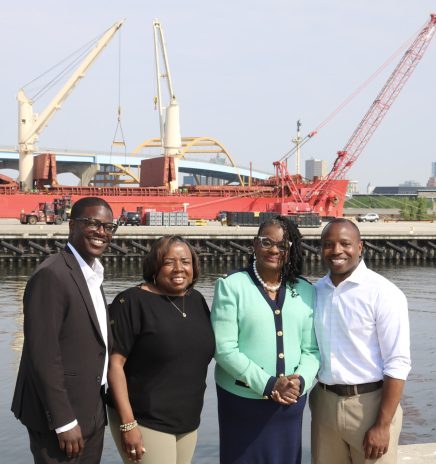
Port Milwaukee Spotlights Significance of Great Lakes Maritime Industry
On June 16, Port Milwaukee hosted an event in recognition of the Great Lakes’ economic value. Congresswoman Gwen Moore, Milwaukee County Executive David Crowley, Milwaukee Mayor Cavalier Johnson and Port... Read More
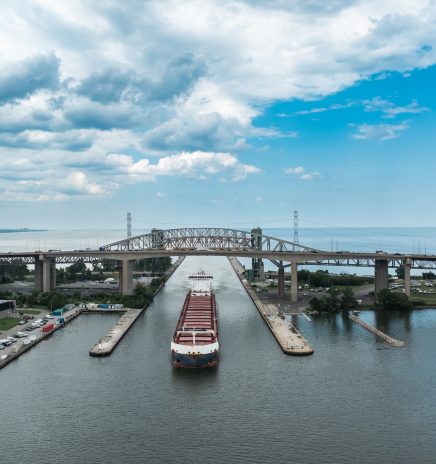
67th Navigation Season Well Underway on the Great Lakes-St. Lawrence Seaway
Despite facing increased economic uncertainty and unpredictability, the 67th navigation season is well underway on the Great Lakes-St. Lawrence Seaway. According to the St. Lawrence Seaway Management Corporation (SLSMC), the... Read More

